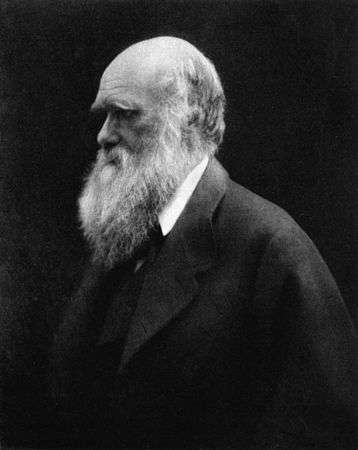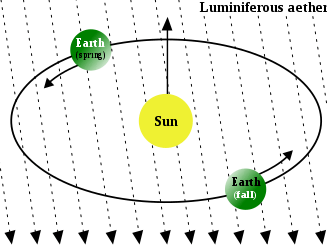Baháʼí Faith and science
A fundamental principle of the Baháʼí Faith is the stated harmony of religion and science. Whilst Baháʼí scripture asserts that true science and true religion can never be in conflict, critics argue that statements by the founders clearly contradict current scientific understanding.[1][2] ʻAbdu'l-Bahá, the son of the founder of the religion, stated that "when a religion is opposed to science it becomes mere superstition".[3] He also said that true religion must conform to the conclusions of science.[4][5]
| Part of a series on |
| Baháʼí Faith |
|---|
 |
|
Central figures |
|
History |
|
Other topics |
This latter aspect of the principle seems to suggest that the religion must always accept current scientific knowledge as authoritative, but some Baháʼí scholars have suggested that this is not always the case.[6] On some issues, the Baháʼí Faith subordinates the conclusions of current scientific thought to its own teachings, which the religion takes as fundamentally true.[7] This is because, in the Baháʼí understanding the present scientific view is not always correct, neither is truth said to be only limited to what science can explain.[5] Instead, in the Baháʼí view, knowledge must be obtained through the interaction of the insights obtained from revelation from God and through scientific investigation.[8]
Harmony between science and religion
ʻAbdu'l-Bahá, the son of the founder of the religion, asserted that science and religion cannot be opposed because they are aspects of the same truth; he also affirmed that reasoning powers are required to understand the truths of religion. Shoghi Effendi, the head of the Baháʼí Faith in the first half of the 20th century, described science and religion as "the two most potent forces in human life".[9]
The teachings state that whenever conflict arises between religion and science it is due to human error; either through misinterpretation of religious scriptures or the lack of a more complete understanding of science. ʻAbdu'l-Bahá explained that religious teachings which are at variance with science should not be accepted; he explained that religion has to be reasonable since God endowed humankind with reason so that they can discover truth.[4] Science and religion, in the Baháʼí writings, are compared to the two wings of a bird upon which a person's intelligence can increase, and upon which a person's soul can progress. Furthermore, the Baháʼí writings state that science without religion would lead to a person becoming totally materialistic, and religion without science would lead to a person falling into superstitious practices. ʻAbdu'l-Bahá in one of his public talks said:
If religion were contrary to logical reason then it would cease to be a religion and be merely a tradition. Religion and science are the two wings upon which man's intelligence can soar into the heights, with which the human soul can progress. It is not possible to fly with one wing alone! Should a man try to fly with the wing of religion alone he would quickly fall into the quagmire of superstition, whilst on the other hand, with the wing of science alone he would also make no progress, but fall into the despairing slough of materialism. All religions of the present day have fallen into superstitious practices, out of harmony alike with the true principles of the teaching they represent and with the scientific discoveries of the time.[10]
Attitude toward science
ʻAbdu'l-Bahá is quoted as saying this:
Mathematicians, astronomers, chemical scientists continually disprove and reject the conclusions of the ancients; nothing is fixed, nothing final; everything is continually changing because human reason is progressing along new roads of investigation and arriving at new conclusions every day. In the future much that is announced and accepted as true now will be rejected and disproved. And so it will continue ad infinitum.[11]
Scientific claims by the founders
Creation
Baháʼu'lláh taught that the universe has "neither beginning nor ending",[12] and that the component elements of the material world have always existed and will continue to exist.[13] In the Tablet of Wisdom ("Lawh-i-Hikmat", written 1873-1874). Baháʼu'lláh states: "That which hath been in existence had existed before, but not in the form thou seest today. The world of existence came into being through the heat generated from the interaction between the active force and that which is its recipient. These two are the same, yet they are different." The terminology used here refers to ancient Greek and Islamic philosophy.[14] Jean-Marc Lepain, Robin Mihrshahi, Dale E. Lehman and Julio Savi suggest a possible relation of this statement with the Big Bang theory.[15][16][17][18]
Baháʼís believe that the story of creation in Genesis is a rudimentary account that conveys the broad essential spiritual truths of existence without a level of detail and accuracy that was unnecessary and incomprehensible at the time.[13] Likewise, ʻAbdu'l-Bahá said that literal story of Adam and Eve cannot be accepted, affirmed, or imagined, and that it "must be thought of simply as a symbol".[19] And rather than accepting the idea of a Young Earth, Baháʼí theology accepts that the Earth is ancient.[20]
Evolution

In regards to evolution and the origin of man, ʻAbdu'l-Bahá gave extensive comments on the subject when he addressed western audiences in the beginning of the 20th century. Transcripts of these talks can be found in Some Answered Questions, Paris Talks and the Promulgation of Universal Peace. ʻAbdu'l-Bahá describes the human species as evolving from a primitive form to modern man, but that the capacity to form human intelligence was always in existence.
ʻAbdu'l-Bahá's comments seem to differ from the standard evolutionary picture of human development, where Homo sapiens as one species along with the great apes evolved from a common ancestor living in Africa millions of years ago.
While ʻAbdu'l-Bahá states that man progressed through many stages before reaching this present form, ʻAbdu'l-Bahá states that humans are a distinct species, and not an animal, and that in every stage of evolution through which humans progressed, they were potentially humans.
But at all times, even when the embryo resembled a worm, it was human in potentiality and character, not animal. The forms assumed by the human embryo in its successive changes do not prove that it is animal in its essential character. Throughout this progression there has been transference of type, a conservation of species or kind. Realizing this we may acknowledge the fact that at one time man was an inmate of the sea, at another period an invertebrate, then a vertebrate and finally a human being standing erect. Though we admit these changes, we cannot say man is an animal. In each one of these stages are signs and evidences of his human existence and destination.[21]
Mehanian and Friberg wrote a 2003 article describing their belief that ʻAbdu'l-Bahá's statements can be entirely reconciled with modern science. Mehanian and Friberg state that ʻAbdu'l-Bahá's departures from the conventional interpretation of evolution are likely due "to disagreements with the metaphysical, philosophical, and ideological aspects of those interpretations, not with scientific findings."[5] And to this end ʻAbdu'l-Bahá suggested that a missing link between human and apes would not be found.[22] The idea of a missing link per se was abandoned by science in favor of the idea of evolutionary transitions.[23][24]
There are some differences between ʻAbdu'l-Bahá's statements and current scientific thought. The Baháʼí perspective that religion must be in accordance with science seems to suggest that religion must accept current scientific knowledge as authoritative; but, according to Mehanian and Friberg, this is not necessarily always the case as in their view the present scientific point of view is not always correct, nor truth only limited to what science can explain.[5]
Oskooi chose the subject of evolution and Baháʼí belief for his 2009 thesis, and in doing so reviewed other Baháʼí authors' works on the subject. He concluded that, "The problem of disharmony between scripture and science is rooted in an unwarranted misattribution of scriptural inerrancy."[25] In other words, he believes that ʻAbdu'l-Bahá made statements about biology that were later proved wrong, and that ʻAbdu'l-Bahá's infallibility should not be applied to scientific matters.
Several authors have written on the subject of evolution and Baháʼí belief.
- Craig Loehle (1990), On Human Origins: A Baháʼí Perspective
- Eberhard von Kitzing (1997), Is the Baháʼí view of evolution compatible with modern science?
- Courosh Mehanian and Stephan Friberg (2003), Religion and Evolution Reconciled: ʻAbdu'l-Bahá's Comments on Evolution
- Bahman Nadimi, Do the Bahaʼi Writings on evolution allow for mutation of species within kingdoms but not across kingdoms?
- Keven Brown (2001), Evolution and Baháʼí Belief: ʻAbdu'l-Bahá's Response to Nineteenth-Century Darwinism
- Fariborz Alan Davoodi, MD, Human Evolution: Directed?
- Salman Oskooi (2009), When Science and Religion Merge: A Modern Case Study
Existence of ether

Aether, or ether, was a substance postulated in the late 19th century to be the medium for the propagation of light. The Michelson-Morley experiment of 1887 made an effort to find the aether, but its failure to detect it led Einstein to devise his Special theory of Relativity. Further developments in modern physics, including General Relativity, Quantum Field Theory, and String Theory all incorporate the non-existence of the aether, and today the concept is considered obsolete scientific theory.
ʻAbdu'l-Bahá's use of the aether concept in one of his talks - his audience including scientists of the time - has been the source of some controversy. The chapter in ʻAbdu'l-Bahá's Some Answered Questions which mentions aether differentiates between things that are "perceptible to the senses" and those which are "realities of the intellect" and not perceptible to the senses.[26] ʻAbdu'l-Bahá includes "ethereal matter" (also translated as "etheric matter"), heat, light and electricity among other things, in the second group of things which are not perceptible to the senses, and are concepts which are arrived at intellectually to explain certain phenomena.[26] The Universal House of Justice referring to ʻAbdu'l-Bahá's use of the word state that, "in due course, when scientists failed to confirm the physical existence of the 'ether' by delicate experiments, they constructed other intellectual concepts to explain the same phenomena" which is consistent with ʻAbdu'l-Bahá's categorization of aether.[26]
Robin Mishrahi in his published paper on the issue titled "Ether, Quantum Physics and the Baháʼí Writings" wrote,
because many of the scientific discoveries and theories referred to in the Baháʼí Writings were yet unknown to the contemporaries of Baháʼu'lláh and ʻAbdu'l-Bahá, They obviously could not have used the technical terms applied for their description nowadays. Instead, They had to make use of and sometimes redefine already existing concepts and terms (e.g. the ether concept or the idea of the four elements of ancient Greek philosophy) in a way that they would accurately explain what They had in mind. On a superficial level, this might give the impression that the Central Figures of the Faith did not actually formulate any new ideas about physical reality. When we study Their Writings more closely, however, we come to realise that this only seems to be the case because Their references to such topics were purposely made in such a way that they would neither offend Their addressees who believed in certain (erroneous) contemporary scientific concepts, nor make use of a terminology that had not yet been developed by contemporary scientists."[16]
Nuclear power
Baháʼu'lláh wrote:
Strange and astonishing things exist in the earth but they are hidden from the minds and the understanding of men. These things are capable of changing the whole atmosphere of the earth and their contamination would prove lethal."[27]
Baháʼís later pointed to this as a statement about the discovery of nuclear energy and the use of nuclear weapons.[28]
Transmutation of elements
In 1873 Baháʼu'lláh wrote:
Consider the doubts which they who have joined partners with God have instilled into the hearts of the people of this land. "Is it ever possible," they ask, "for copper to be transmuted into gold?" Say, Yes, by my Lord, it is possible. Its secret, however, lieth hidden in Our Knowledge. We will reveal it unto whom We will. Whoso doubteth Our power, let him ask the Lord his God, that He may disclose unto him the secret, and assure him of its truth. That copper can be turned into gold is in itself sufficient proof that gold can, in like manner, be transmuted into copper, if they be of them that can apprehend this truth. Every mineral can be made to acquire the density, form, and substance of each and every other mineral. The knowledge thereof is with Us in the Hidden Book.[29]
Life on other planets

Baháʼu'lláh stated:
The learned men, [divines] that have fixed at several thousand years the life of this earth, have failed, throughout the long period of their observation, to consider either the number or the age of the other planets. Consider, moreover, the manifold divergencies that have resulted from the theories propounded by these men. Know thou that every fixed star hath its own planets, and every planet its own creatures, whose number no man can compute.[30] [Emphasis added]
The idea that every planet has "its own creatures" is controversial. While no direct evidence has been found of extraterrestrial life, theories range from the Rare Earth hypothesis, that the earth may be unique in hosting life, to the more common idea that it would be improbable for life not to exist somewhere other than Earth.[31][32]
Very few Baháʼí sources deal with this idea in detail. Shoghi Effendi wrote in a letter,
...the creatures which Baháʼu'lláh states to be found in every planet cannot be considered to be necessarily similar or different from human beings on this earth. Baháʼu'lláh does not specifically state whether such creatures are like or unlike us. He simply refers to the fact that there are creatures in every planet. It remains for science to discover one day the exact nature of these creatures.[33]
On the same subject, the Universal House of Justice wrote,
As you rightly state, Baháʼu'lláh affirms that every fixed star has its planets, and every planet its own creatures. The House of Justice states however, that it has not discovered anything in the Baháʼí Writings which would indicate the degree of progress such creatures may have attained.[34]
See also
- Creationism
- Creation–evolution controversy
- Religion and science
- Baháʼí cosmology
- Baháʼí prophecies
- Islam and science
Notes
- Various (1975-12-26) [1912]. Letter written on behalf of the Universal House of Justice. Research Department of the Universal House of Justice, Baháʼí World Centre (published December 1995). Retrieved 2007-12-01.
- Basiti; Moradi; Akhoondali (2014). Twelve Principles: A Comprehensive Investigation on the Baha'i Teachings (1st ed.). Tehran: Bahar Afshan Publications. p. 160.CS1 maint: ref=harv (link)
- ʻAbdu'l-Bahá 1912, pp. 141–146
- Effendi 1912
- Mehanian & Friberg 2003
- "It also requires us not to limit science to any particular school of thought or methodological approach postulated in the course of its development." in Universal House of Justice (1997-08-13). "19 May 1995 letter, written on behalf of the Universal House of Justice to an individual believer (published in Memorandum on Quotations on Science and Religion". Retrieved 2007-12-02.
- Effendi 1946
- Universal House of Justice (1997-08-13). "19 May 1995 letter, written on behalf of the Universal House of Justice to an individual believer (published in Memorandum on Quotations on Science and Religion". Retrieved 2007-12-02.
- Effendi 1938
- ʻAbdu'l-Bahá 1912, p. 143
- Effendi 1912, p. 21
- Effendi 1912, p. 220
- Esslemont 1980, pp. 204–205
- Taherzadeh, A. (1987). The Revelation of Baháʼu'lláh, Volume 4: Mazra'ih & Bahji 1877-92. Oxford, UK: George Ronald. p. 42. ISBN 0-85398-270-8.
- Lepain, Jean-Marc (2015) [2002]. The Archeology of the Kingdom of God.
- Mihrshahi, Robin (2002). "Ether, Quantum Physics and the Baháʼí Writings". Australian Baháʼí Studies Journal. 4: 3–20.
- Lehman, Dale E. (2005). Cosmology and the Baháʼí Writings Archived 2014-11-28 at the Wayback Machine.
- Julio, Savi (1989). The Eternal Quest for God: An Introduction to the Divine Philosophy of ʻAbdu'l-Bahá (PDF). Oxford, UK: George Ronald. p. 134. ISBN 0-85398-295-3.
- ʻAbdu'l-Bahá 1912, p. 140
- Brown, Keven; Von Kitzing, Eberhard, eds. (2001). Evolution and Baháʼí belief: ʻAbduʾl-Bahá's response to nineteenth-century Darwinism; Volume 12 of Studies in the Bábí and Baháʼí religions. Kalimat Press. pp. 6, 17, 117, etc. ISBN 978-1-890688-08-0.
- Effendi 1912, p. 358
- Matthews, Gary L. (2005). The Challenge of Baha'u'llah. US Baha'i Publishing Trust. pp. 90–5. ISBN 978-1-931847-16-2.
- Prothero, D (2008-02-27). "Evolution: What missing link?". New Scientist. No. 2645. pp. 35–40.CS1 maint: ref=harv (link)
- "Newly found fossils could link to human ancestor". CBC News. 8 April 2010. Archived from the original on 11 April 2010. Retrieved 2010-04-08.
It's tempting to call the new species a "missing link" between earlier species and modern humans, but scientists say the concept no longer applies, given new knowledge of human evolution. ... Researchers now say the evolution of humans consisted of a number of diverse species in many branches, not a single smooth line from ape-like species to humans.
- "When Science and Religion Merge". Bahai-library.com. Retrieved 2012-08-15.
- Letter to an individual by the Universal House of Justice
- Baháʼu'lláh 1994, p. 69
- Smith, Peter (2000). "nuclear power". A concise encyclopedia of the Baháʼí Faith. Oxford: Oneworld Publications. pp. 260–261. ISBN 1-85168-184-1.
- Baháʼu'lláh, Gleanings from the Writing of, Section XCVII
- Baháʼu'lláh 1990, pp. 162–163
- Steiger, Brad; White, John, eds. (1986). Other Worlds, Other Universes. Health Research Books. p. 3. ISBN 0-7873-1291-6.
- Filkin, David; Hawking, Stephen W. (1998). Stephen Hawking's universe: the cosmos explained. Art of Mentoring Series. Basic Books. p. 194. ISBN 0-465-08198-3.
- Hornby 1994, p. 478
- Universal House of Justice (1996-08-06). "Sabeans, UFOs, Alien Abduction and Genetic Engineering". Retrieved 2006-05-20.
References
- ʻAbdu'l-Bahá (1908). Some Answered Questions. Wilmette, Illinois, USA: Baháʼí Publishing Trust (published 1990).CS1 maint: ref=harv (link)
- ʻAbdu'l-Bahá (2014). Some Answered Questions (Newly revised. ed.). Haifa, Israel: Baháʼí World Centre. ISBN 978-0-87743-374-3.CS1 maint: ref=harv (link)
- ʻAbdu'l-Bahá (1912). Paris Talks. London: Baháʼí Distribution Service (published 1995). ISBN 1-870989-57-0.CS1 maint: ref=harv (link)
- ʻAbdu'l-Bahá (1978). Gail, Marzieh (ed.). Selections From the Writings of ʻAbdu'l-Bahá. Wilmette, Illinois, USA: Baháʼí Publishing Trust. ISBN 0-85398-081-0.CS1 maint: ref=harv (link)
- Baháʼu'lláh (1990). Effendi, Shoghi (ed.). Gleanings from the Writings of Baháʼu'lláh. Wilmette, Illinois, USA: Baháʼí Publishing Trust. ISBN 0-87743-187-6.CS1 maint: ref=harv (link)
- Baháʼu'lláh (1994) [1873-92]. Tablets of Baháʼu'lláh Revealed After the Kitáb-i-Aqdas. Wilmette, Illinois, USA: Baháʼí Publishing Trust. ISBN 0-87743-174-4.CS1 maint: ref=harv (link)
- Effendi, Abbas (1912). The Promulgation of Universal Peace. US Baháʼí Publishing Trust (published 1987). ISBN 0-87743-172-8.CS1 maint: ref=harv (link)
- Effendi, Shoghi (1946). Arohanui: Letters from Shoghi Effendi to New Zealand. Suva, Fiji Islands: Baháʼí Publishing Trust (published 1982).CS1 maint: ref=harv (link)
- Effendi, Shoghi (1938). The World Order of Baháʼu'lláh. Wilmette, Illinois: Baháʼí Publishing Trust (published 1991). ISBN 0-87743-231-7.CS1 maint: ref=harv (link)
- Esslemont, J.E. (1980). Baháʼu'lláh and the New Era (5th ed.). Wilmette, Illinois: Baháʼí Publishing Trust. ISBN 0-87743-160-4.CS1 maint: ref=harv (link)
- Hornby, Helen, ed. (1994). "On behalf of Shoghi Effendi to an individual believer, 9 February 1937". Lights of Guidance: A Baháʼí Reference File. New Delhi, India: Baháʼí Publishing Trust. ISBN 81-85091-46-3.CS1 maint: ref=harv (link)
- Mehanian, Courosh; Friberg, Stephen R. (2003). "Religion and Evolution Reconciled: ʻAbdu'l-Bahá's Comments on Evolution" (PDF). The Journal of Baháʼí studies. 13 (1–4). pp. 55–93. Archived from the original (PDF) on 2011-07-18.CS1 maint: ref=harv (link)
- Taherzadeh, A. (1987). The Revelation of Baháʼu'lláh, Volume 4: Mazra'ih & Bahji 1877-92. Oxford, UK: George Ronald. ISBN 0-85398-270-8.CS1 maint: ref=harv (link)